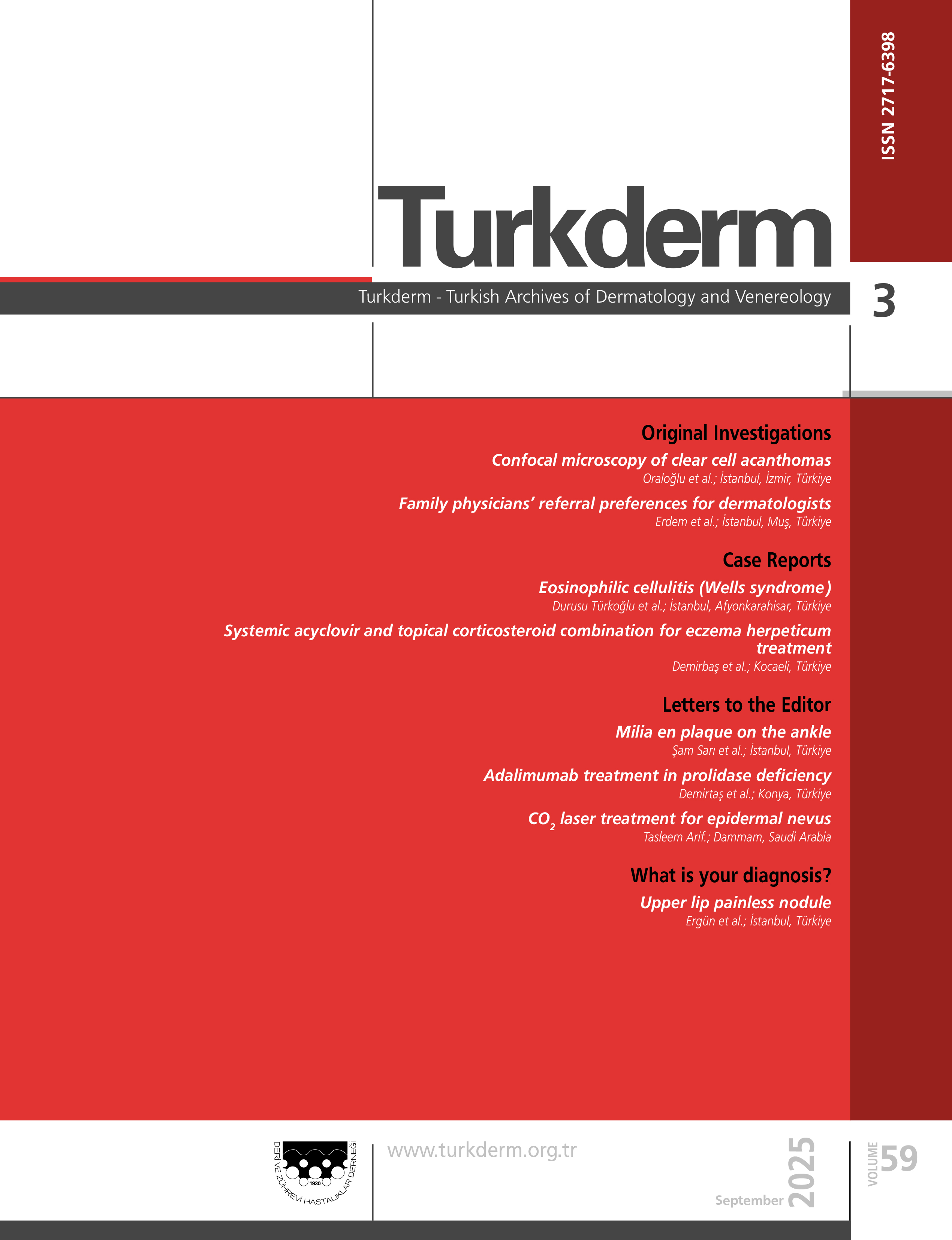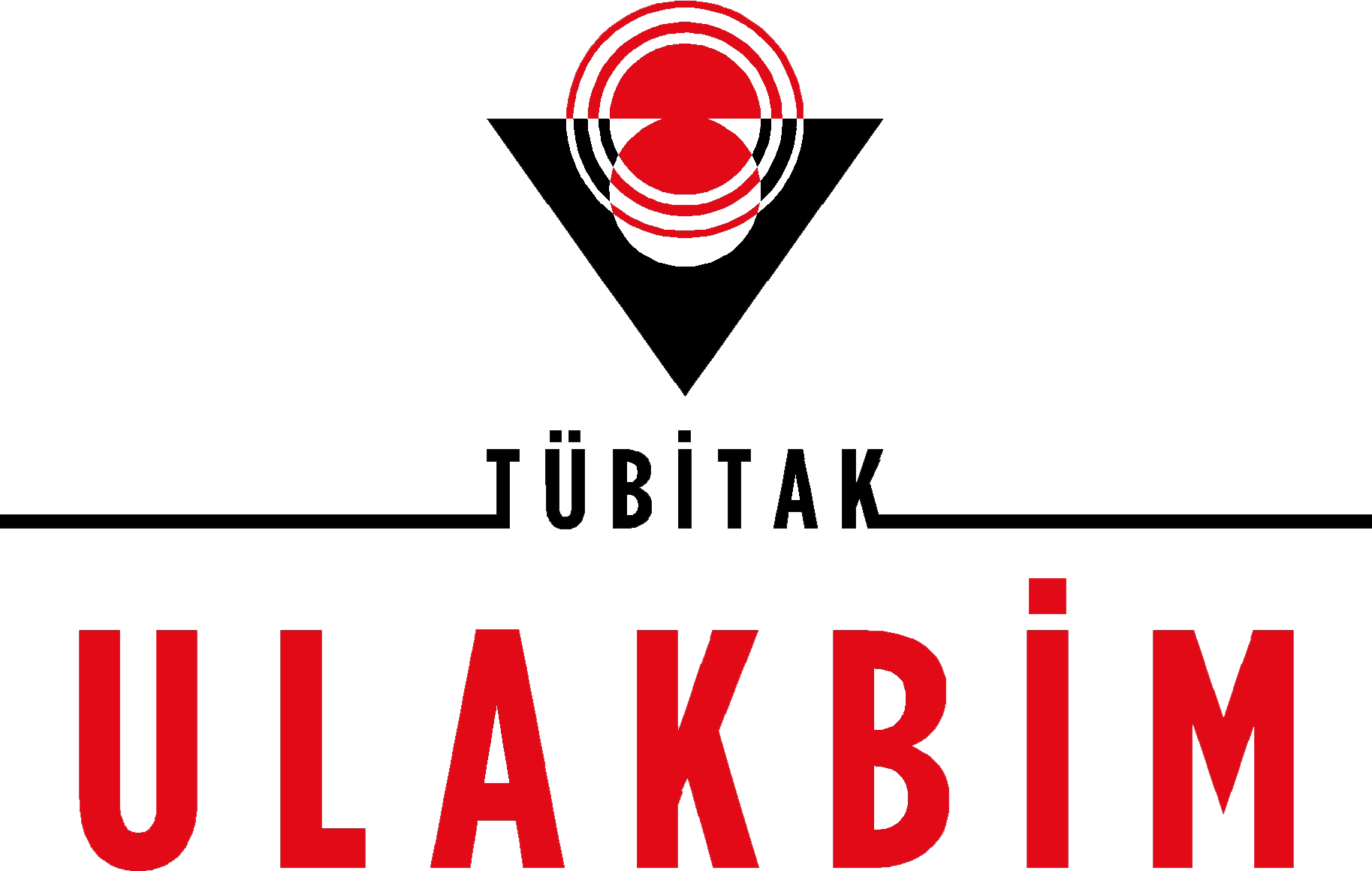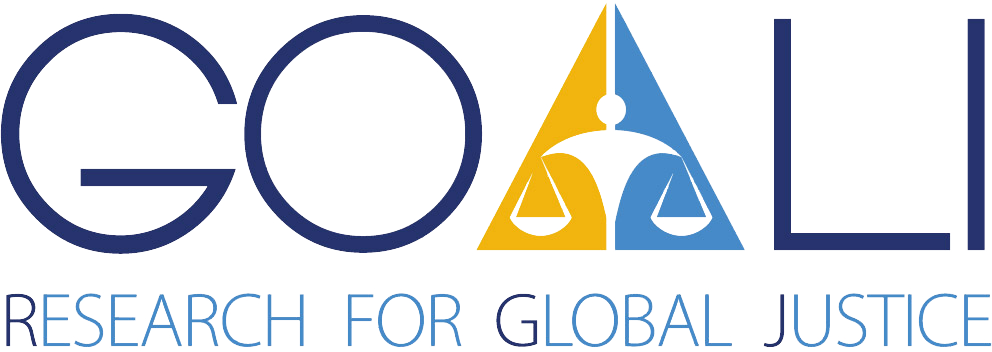Relationship between Glutathione S-transferase gene polymorphisms and clinical features of psoriasis: A case-control study in the Turkish population
Hatice Gül Dursun1, Recep Dursun2, ilknur Çınar Ayan1, Ayşe Gül Zamani3, Mahmur Selman Yıldırım31Necmettin Erbakan University Faculty of Medicine, Department of Medical Biology, Konya, Turkey.2Necmettin Erbakan University, Faculty of Medicine, Department of Dermatology, Konya, Turkey.
3Necmettin Erbakan University, Faculty of Medicine, Department of Medical Genetics, Konya, Turkey.
Background and Design: In this study, we investigated whether Glutathione S-transferase Mu 1 (GSTM1) and Glutathione S-transferase Pi 1 (GSTP1) gene polymorphisms are risk factors for psoriasis development and characteristics of psoriasis.
Materials and Methods: Venous blood samples were collected from both the patients and control subjects into 2 mL EDTA tubes. DNA was isolated from 260 psoriasis patients and 200 healthy control subjects, and GSTM1 and GSTP1 gene polymorphisms were genotyped by realtime polymerase chain reaction method.
Results: According to the analysis results, although the frequency of the GSTM1 null genotype was 1.33 times higher in patients compared to controls, this difference was statistically insignificant [95% confidence interval (CI): 0.91-1.93, p=0.13]. GSTP1 AG heterozygous genotype and GG homozygous polymorphic genotype frequencies also did not differ between patients and controls [odds ratio (OR): 0.80, 95% CI: 0.55-1.18, p=0.27 for AG genotype; OR: 0.74, 95% CI: 0.35-1.56, p=0.42 for GG genotype]. When both polymorphisms were evaluated based on the onset age and severity of the disease, no significant difference was found between the early onset age group and the late onset age group, nor between the mild group and the severe group.
Conclusion: The results show that GSTM1 and GSTP1 polymorphisms do not have a major effect on the etiopathogenesis and clinical characteristics of psoriasis.
Keywords: Psoriasis, GST, gene polymorphisms, cellular detoxification
Glutatyon S-transferaz gen polimorfizmleri ile psoriazisin klinik özellikleri arasındaki ilişki: Türk popülasyonunda olgu kontrol çalışması
Hatice Gül Dursun1, Recep Dursun2, ilknur Çınar Ayan1, Ayşe Gül Zamani3, Mahmur Selman Yıldırım31Tıbbi Biyoloji AD, Tıp Fakültesi, Necmettin Erbakan Üniversitesi, Konya, Türkiye2Dermatoloji AD, Tıp Fakültesi, Necmettin Erbakan Üniversitesi, Konya, Türkiye
3Tıbbi Genetik AD, Tıp Fakültesi, Necmettin Erbakan Üniversitesi, Konya, Türkiye
Amaç: Bu çalışmada Glutatyon S-transferaz Mu 1 (GSTM1) ve Glutatyon S-Transferaz Pi 1 (GSTP1) gen polimorfizmlerinin psoriazis gelişimi ve özellikleri açısından risk faktörü olup olmadığını araştırdık.
Gereç ve Yöntem: Hasta ve kontrollerden 2 mLlik EDTAlı tüplere kan örnekleri alındı. İki yüz altmış psoriazis hastası ve 200 sağlıklı kontrolden DNA izolasyonu yapıldı ve GSTM1 ve GSTP1 gen polimorfizmleri gerçek zamanlı polimeraz zincir reaksiyonu yöntemiyle genotiplendirildi.
Bulgular: Analiz sonuçlarına göre hastalarda GSTM1 null genotip sıklığı kontrollere göre 1,33 kat daha yüksek olmasına rağmen bu fark istatistiksel olarak anlamlı değildi [%95 güven aralığı (GA): 0,91-1,93, p=0,13]. GSTP1 AG heterozigot genotip ve GG homozigot polimorfik genotip frekansları da hastalar ve kontroller arasında farklılık göstermedi (AG genotipi için [olasılık oranı (OO): 0,80, %95 GA: 0,55-1,18, p=0,27; OO: 0,74, %95 GA: 0,35-1,56, GG genotipi için p=0,42]. Her iki polimorfizm hastalığın başlangıç yaşı ve şiddetine göre değerlendirildiğinde erken başlangıçlı yaş grubu ile geç başlangıçlı yaş grubu arasında ve hafif grup ile ağır grup arasında anlamlı fark bulunamadı.
Sonuç: Sonuçlar GSTM1 ve GSTP1 polimorfizmlerinin psoriazisin etiyopatogenezi ve klinik özellikleri üzerinde önemli bir etkisinin olmadığını göstermektedir.
Anahtar Kelimeler: Psoriasis, GST, gen polimorfizmi, hücresel detoksifikasyon
Manuscript Language: English























